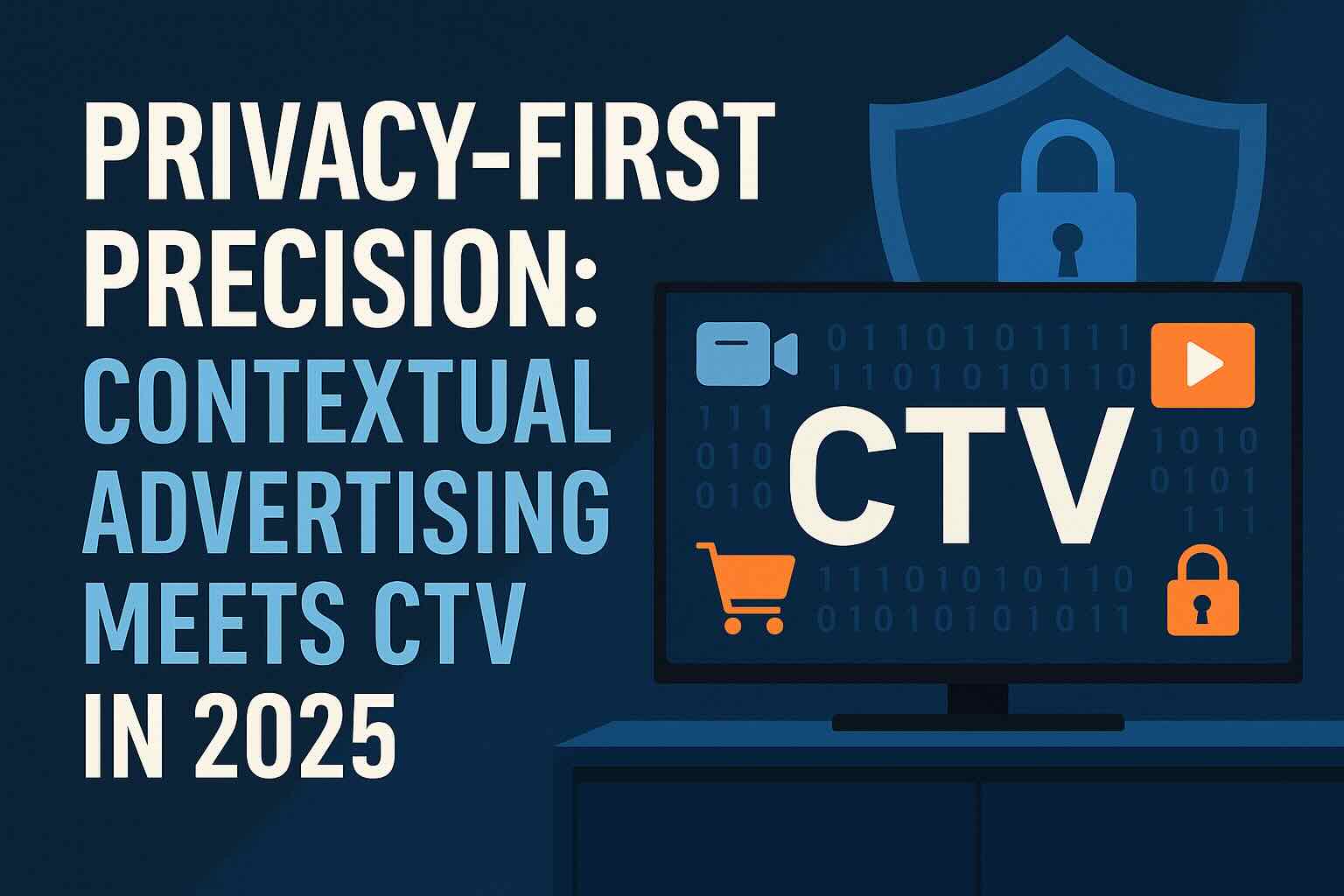
Introduction: Why Contextual AI Matters Now
With third-party cookies disappearing and data regulations tightening, advertisers are seeking privacy-safe ways to reach viewers at scale. Contextual AI in Connected TV (CTV) is stepping in—analyzing what people are watching, not who they are—to deliver relevant, brand-safe ads without compromising trust.
CTV’s Meteoric Rise: An Advertising Powerhouse
The CTV market is growing at breakneck speed. Global CTV ad spend is projected to reach $48 billion in 2025, up from $36 billion in 2023—a 33% increase in just two years (SoCal News Group).
In the U.S., CTV ad spend is expected to hit $26.6 billion in 2025, with more than 90% transacted programmatically (TV Technology). As traditional linear TV continues to decline, digital video—and CTV in particular—is positioned to become the dominant video ad channel.
What Is Contextual AI—and How It Works on CTV
Unlike identity-based targeting, Contextual AI analyzes:
- Video metadata, transcripts, and objects using computer vision, natural language processing (NLP), and multimodal AI models.
- Program and schedule data for accurate contextual classification.
This approach allows ad platforms to interpret scenes, topics, moods, and even on-screen actions—serving ads that align with the content in real time.
Why It Delivers: Three Key Benefits
🔐 Privacy-First Advertising
Studies show contextual targeting leads to significantly reduced perceived privacy violations compared to behavioral or cohort-based methods—because there’s no user tracking and no personal data leaving the device.
✅ Brand Safety & Relevance
AI filters, combined with standardized metadata and classification frameworks, ensure ads appear only in suitable, contextually aligned environments.
📈 Better Performance
When ads match the content’s tone or theme, engagement improves—boosting cost-per-view (CPV) efficiency and click-through rates, even without identity data.
Real-World Case Studies & Platform Use Cases
🖥️ LG Ad Solutions + Viant: Privacy-Safe Household Reach
On July 21, 2025, LG Ad Solutions integrated with Viant’s DSP, enabling addressable ads across 45 million U.S. LG smart TVs (TV Technology, Adweek). This partnership combines Viant’s privacy-safe Household ID with IRIS.TV’s contextual taxonomy for content-level targeting.
🎥 JWP Connatix’s Deep Contextual™: AI at Scale
Following the October 2024 merger of JW Player and Connatix (PR Newswire), the company launched Deep Contextual™—an AI solution that uses deep learning, computer vision, and NLP to analyze video content and metadata. Results include +17% viewability, +11% video completion rate, and +37% click-through rate over 1.7 billion impressions (JWP Connatix).
🛒 Contextual Commerce on the Rise
According to Digiday, 66% of brands using AI in CTV are scaling shoppable, interactive ads tied to contextual signals, and nearly half report measurable conversion uplift from these formats.
AI Meets Creative: GenAI & Dynamic CTV Ads
The IAB reports that 86% of ad buyers already use or plan to use generative AI for video ad creation, with 40% of all video ads expected to be GenAI-generated by 2026. Creative is becoming dynamic—adapting style, messaging, and calls to action in real time to match the genre, tone, or product category identified in the content.
Challenges & Best Practices
⚠️ Misclassification & Bias
AI can misread tone or imagery, pairing ads with unsuitable content.
Best practice: Maintain human-in-the-loop validation and continuous AI model retraining.
⚠️ Over-Reliance on Context Alone
Context doesn’t always equal intent.
Best practice: Combine contextual signals with first-party or cohort data (within privacy limits) for greater precision.
⚠️ Compliance & Transparency
Advertisers must ensure AI models, data sources, and classification methods meet privacy regulations and brand safety standards.
Future Trends: Smart, Shoppable, Contextual Ecosystems
- Multimodal AI (like ContextIQ models on arXiv) is improving semantic accuracy across video, audio, and metadata for safer placements.
- Interactive formats—QR overlays, shoppable units, dynamic creatives—are blurring the lines between content and commerce.
- Programmatic CTV growth continues: 47% of CTV inventory is expected to be biddable, with 74% of buyers investing in internal teams for activation (IAB).
- Platforms like The Trade Desk are building CTV OS environments (e.g., Ventura) that prioritize transparent identity frameworks like Unified ID 2.0.
🔍
Key Takeaway
In a post-cookie world, Contextual AI on CTV offers a unique blend of precision, performance, and privacy. By focusing on the context of content rather than the identity of viewers—and leveraging the latest AI tools—advertisers can deliver impactful campaigns that are both effective and privacy-compliant.


